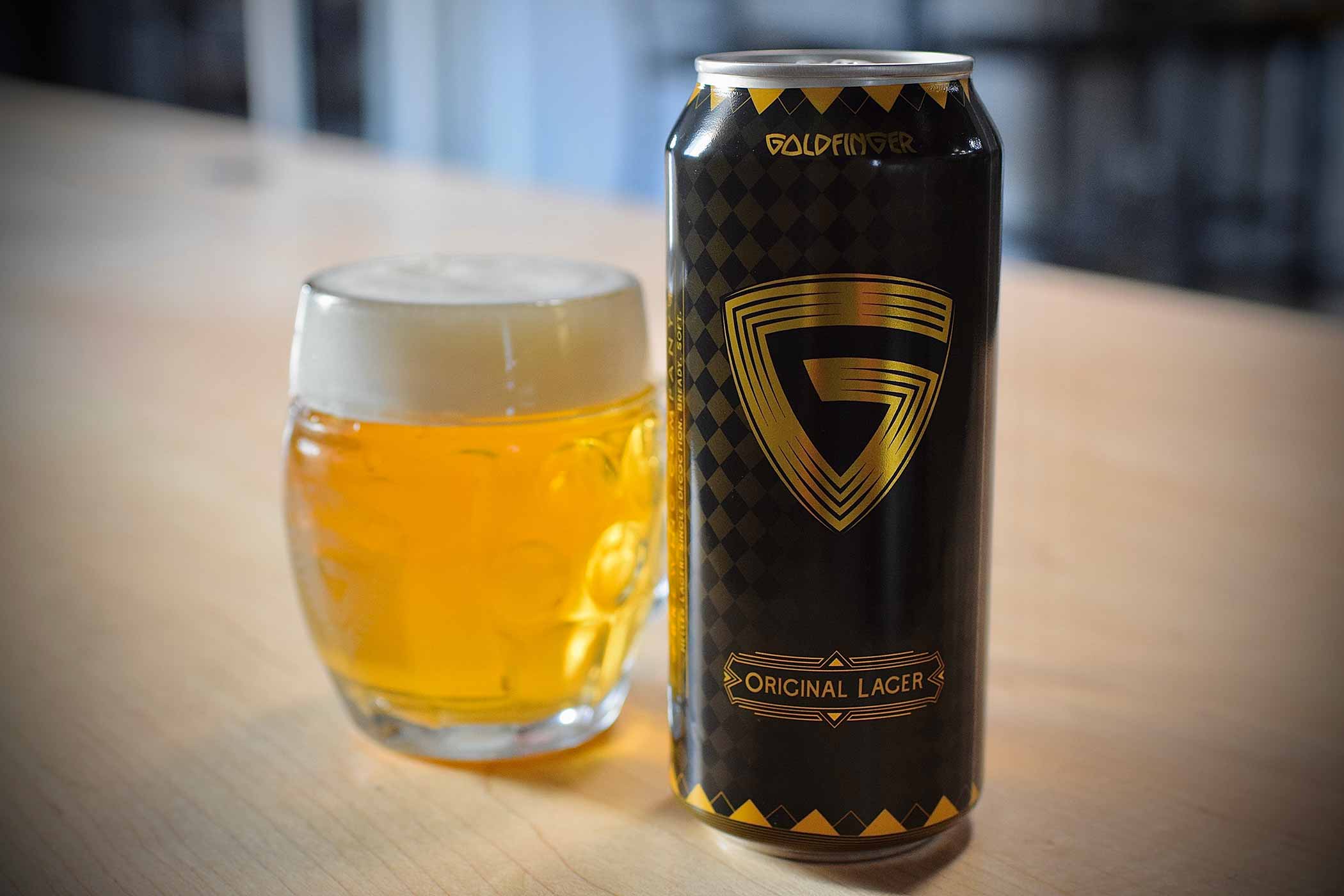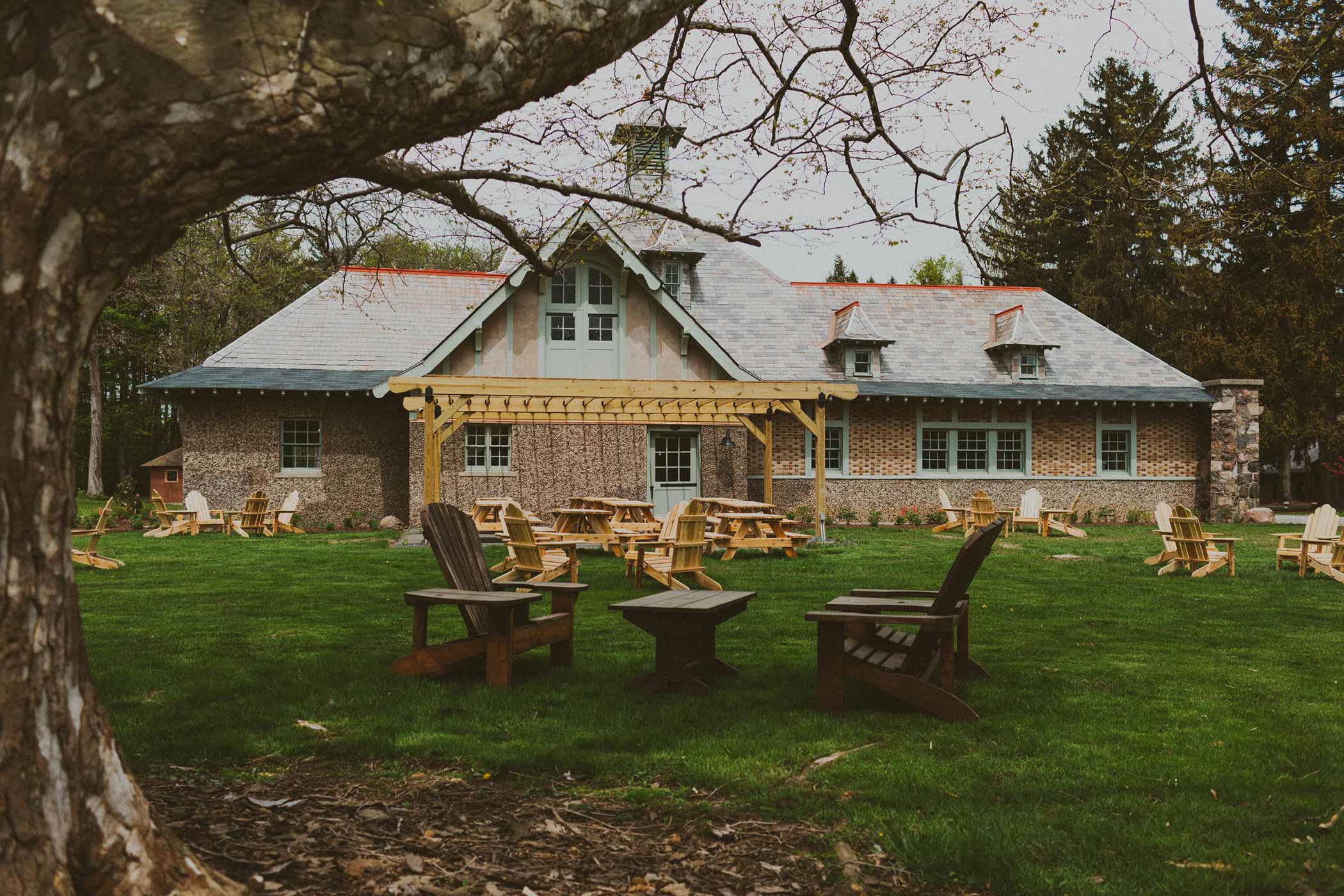Shop
At Goldfinger, Lagers Are a Lifeblood, Literally
Lager is legacy.
Our Top Brewery Stories:
“Did you go to Northwestern? Your name sounded so familiar, and you also looked familiar. Didn’t we go to Cuba together?” Goldfinger Owner and Brewer Tom Beckmann sent me that email after I interviewed him for a piece on pre-Prohibition lagers.
After putting together a series of pieces on “Untappd’s All-Time Top-Rated Beers,” I noticed a trend with any lager list: Goldfinger made the top ten in almost every single one, prompting us to add them to our ranking of “The 13 Best Breweries to Watch in 2024.”
After chatting with Beckmann, he put the pieces of our shared past together. We had indeed gone to college together and spent two weeks as part of a Jewish mission trip to Cuba in what must have been 2009 or 2010. We traveled to the country before Obama lifted restrictions, bringing aid to synagogues in Havana and further inland, often just a room in someone’s house. It was an incredible trip that I remember vividly. I couldn’t believe that, almost fifteen years later, Beckmann and I reconnected for the first time, now with a shared passion.
How funny that we both found our way into the beer industry in very different ways. With Goldfinger now making some of the best lagers in the country out of its Midwestern taproom in Downers Grove, Illinois, it’s almost like Beckmann was born to do this.
Which he actually kind of was.
Born With Brewing in His Blood
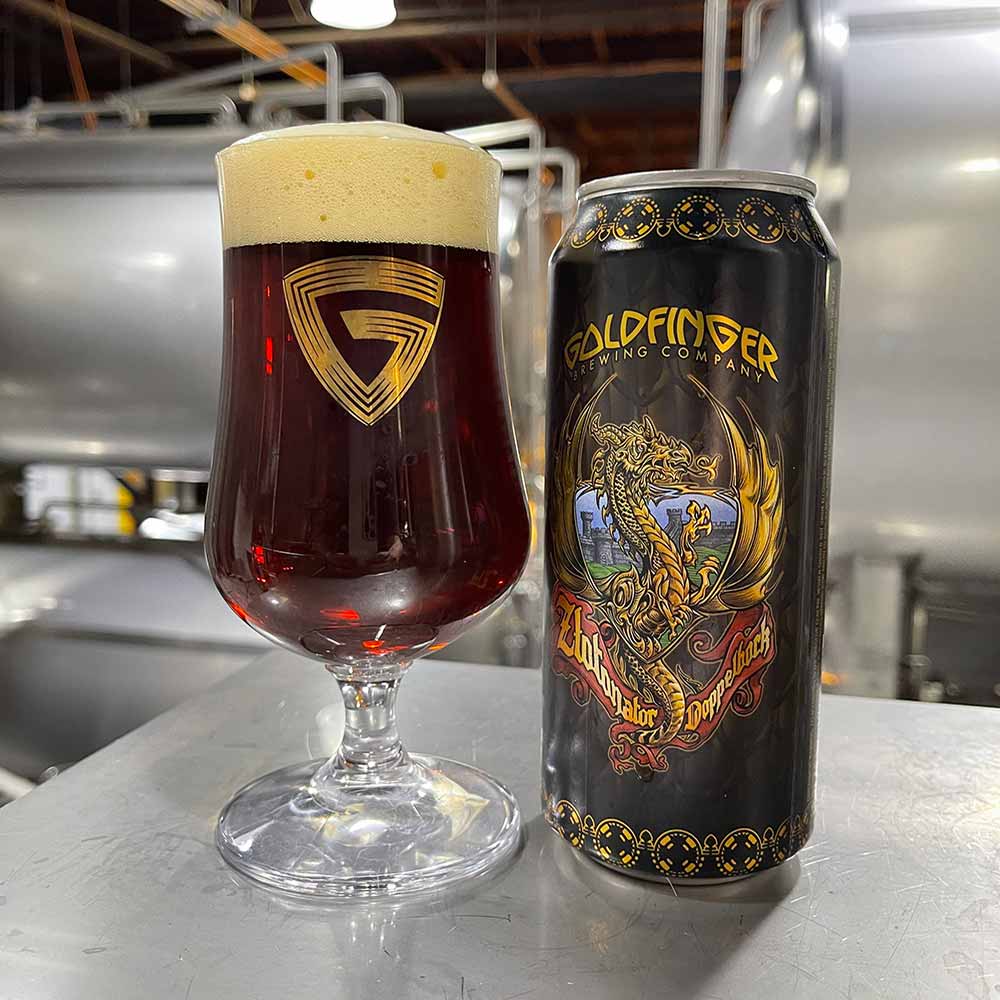
Photography courtesy of Goldfinger Brewing Company
When I knew Beckmann, he wasn’t brewing. And candidly, at the time, I was still drinking a lot of Busch Light.
Over the years, that obviously changed for both of us.
After college, Beckmann went into corporate IT sales. While living with his brother in downtown Chicago, the pair got into craft beer and cooking, making all their food from scratch.
“So we eventually thought: Why don’t we make beers we like from scratch?” explains Beckmann, who purchased a homebrew kit and started all-grain brewing.
Even while at work, Beckmann’s mind drifted to his next brewing experiment, the next beer.
Simultaneously, Beckmann had reconnected with a lost side of his father’s family in Poland. Through Ancestry.com, he discovered his relatives—the Goldfingers—brewed professionally and manufactured brewing equipment in Poland and Czechia during the nineteenth century.
Unfortunately, during the twentieth century, a series of horrible wars ravaged his family’s business. Eventually, Beckmann says his dad’s side of the family ended up in Colombia, where his dad was born.
The brewing part of his family’s history faded away.
Until now.
“It made sense to me why I was so smitten by homebrewing,” says Beckmann, who decided after discovering his family’s brewing history, “I’m going to set out to revive what my family did in the nineteenth century.”
Following in the Footsteps of a Family Legacy
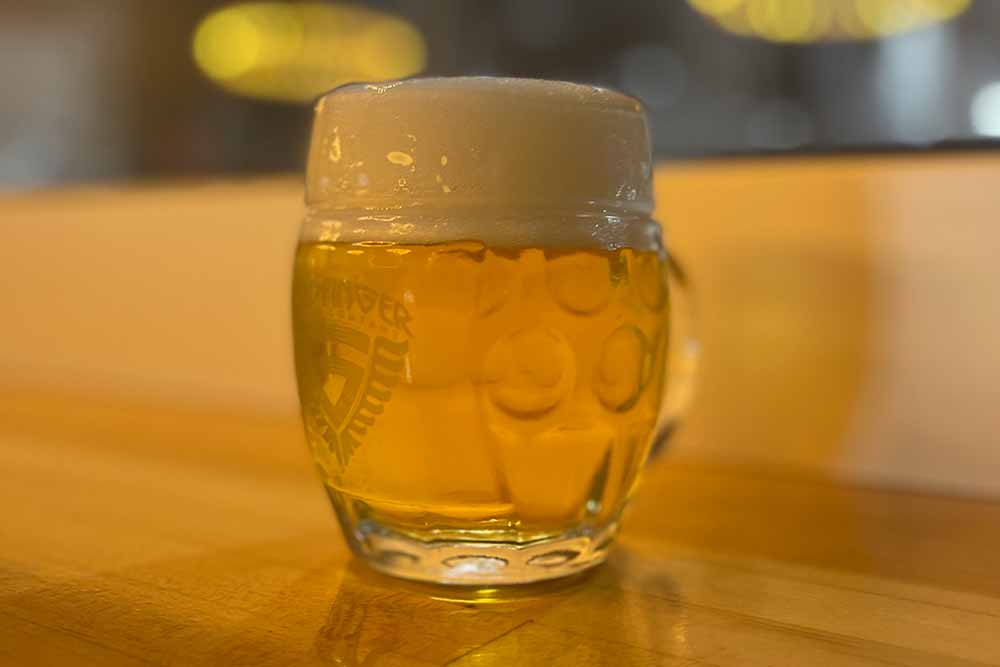
Photography courtesy of Goldfinger Brewing Company
Beckmann quit his job and enrolled in the World Brewing Academy, a program that split time between the Siebel Institute of Technology in Chicago and the Doemens Academy in Munich, Germany.
Coming back to the States, Beckmann landed his first professional brewing job at Lagunitas’ Chicago facility (which recently announced its closure).
“I couldn’t even close a tri-clamp when I got that job,” Beckmann says with a chuckle. “I was such a novice on a commercial scale; I was brewing insane amounts of beer, but it was incredible.”
After about six months, though, Beckmann says he wanted to find opportunities on a smaller scale because “I knew my whole goal was to revive this brewery of my ancestry, and I knew brewing 250-bbl batches was not too applicable,” says Beckmann.
Obviously, Beckmann wasn’t brewing many of those at Lagunitas, so he joined a brewpub called Emmett’s Brewing Company in a small town called Downers Grove to “scratch that creative itch.”
Beckmann worked there for a couple of years while he launched Goldfinger across town. “I had this vision: We were going to brew beers my ancestors were brewing at the time and beers that I love,” says Beckmann. “Lagers!”
Following in the Footsteps of a Family Lager Legacy
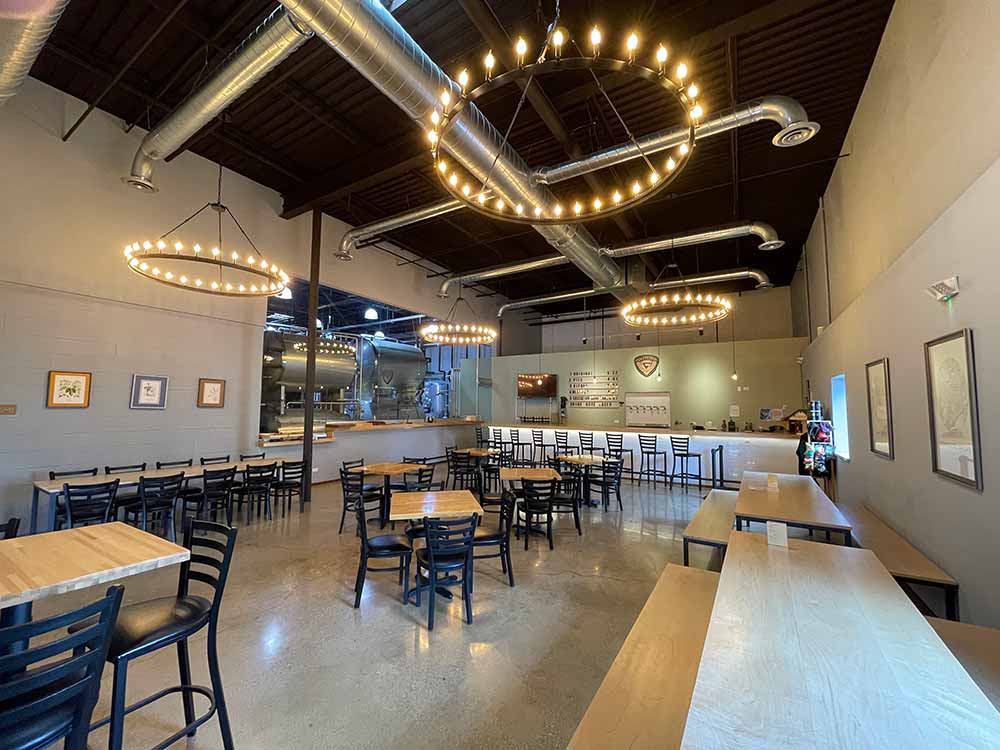
Photography courtesy of Goldfinger Brewing Company
Beckmann always knew that, when he opened a brewery, he would focus specifically on lagers.
“First and foremost, it’s what I love to drink,” he says, noting that lagers also paid homage to what his ancestors would have brewed at the time in Europe. “I’m genetically predisposed to like lagers!”
Goldfinger launched in July 2020 with only three beers—all lagers—including the Original Lager, Pils, and Vienna Lager.
For Original Lager, Beckmann and his wife worked on pilot batches of the approachable German pale lager in his parent’s garage.
“Helles lager is one of my favorite styles,” shares Beckmann, who debuted a keg of the beer to rave reviews during his wedding. “That gave us the confidence to think, hey, we’re making pretty decent beer here.”
The recipe hasn’t changed much from the garage.
The Original Lager starts with Pilsner malt and Hallertau Mittelfrüh hops. “It’s a single malt and single hop beer that we perform a single decoction on,” explains Beckmann. “That decoction is intended to help create a little more depth and body.”
Beckmann describes the recipe as simple, with most of the focus going towards fermentation and lagering. “[That’s where] we take our time,” he says.
At Goldfinger, the Original Lager spends seven weeks in a horizontal tank after fermentation. Beckmann won’t package the beer until “we feel it looks really nice and tastes really nice,” he says.
This beer is all about good, clean, technical brewing, making it one of Beckmann’s favorites.
“It is extremely difficult to achieve because it doesn’t have any bold flavors on any fronts,” he says. “It’s not overly [malty] or hoppy.”
It all comes down to subtle tweaks here and there.
“People might think it’s boring to brew the same beer over and over,” says Beckmann, who believes the last batch they brewed is his favorite, thanks to minor tweaks in their brewing process. “But not for us because it gives us this unprecedented opportunity to become more intimate with the raw materials, understanding how they behave from the moment we mix water with mash.”
The Beer Beckmann Drinks the Most
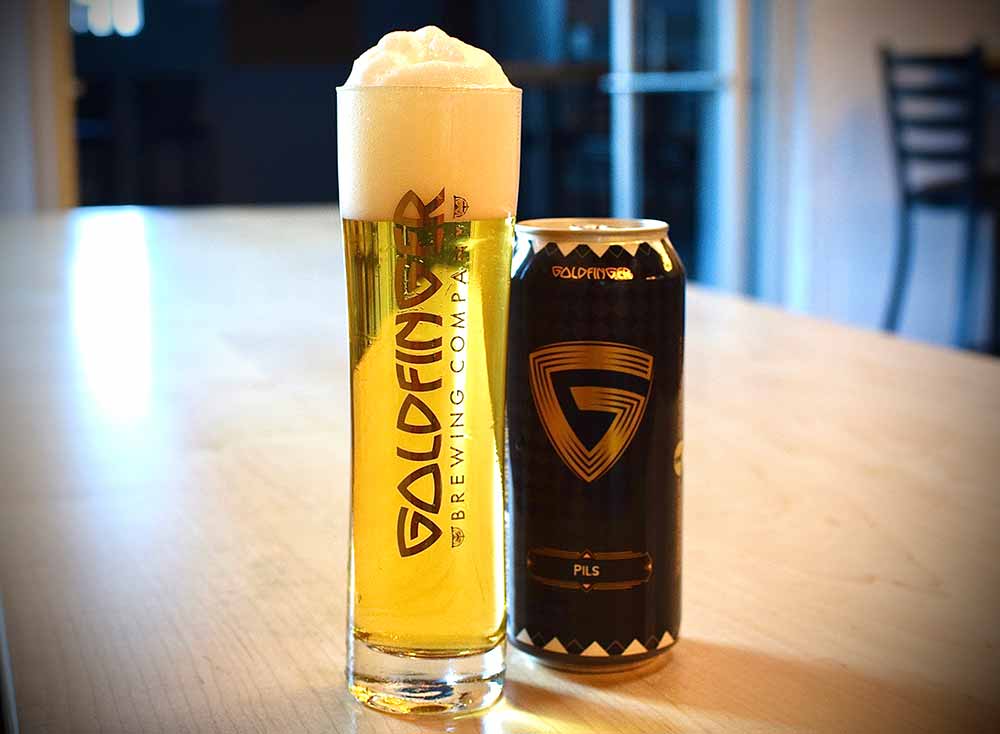
Photography courtesy of Goldfinger Brewing Company
While proudest of the helles, Beckmann says the beer he drinks the most is actually their Pils.
Goldfinger’s version comes from a particular memory and beer—Herzoglich Bayerisches Brauhaus Tegernsee’s Tegernseer Pils.
Beckmann found himself sitting at this monastic brewery on a pristine lake in the Bavarian Alps, drinking their pils that “had this beautiful expression of floral and spice, a great balance with the quintessential Bavarian pils maltiness—ultra dry and bitter bite with still a bit of body,” he recalls, saying his memory boiled down to one thought: “This might be my favorite beer I’ve ever had!”
Beckmann designed Goldfinger’s Pils around that memory.
He starts with Pilsner malt and German Tradition and Tettnang hops, with the latter being the main focus.
“Tettnang is one of my favorite hops because it toes the line between floral and spicy,” says Beckmann. “I love that balance.”
Pouring out Pils, you’ll find a predominant malty aroma with a gentle hop undertone.
The malt expresses more on the cracker than the honey side, explains Beckmann, “but it’s not heavy and doesn’t weigh on the palate; it just kind of glides across and gives a temporary Noble hop bite that goes away pretty quickly.”
Beckmann says you don’t even notice the zippy hop character after a couple of sips. “Now, it forms more of a functional bitterness that keeps you coming back for the next sip,” he says, noting they serve the beer in a tall .3L pilsner glass. “It still amazes me today how quickly the beer goes down.”
Goldfinger also likes to slow pour this beer, a presentation involving several steps over about seven minutes that build up an incredible ice cream-like mound of foam on top.
“We present you with this beautiful Alpatian-looking rocky foam with a little bit of softness on the carbonation so you can
that back in three sips,” explains Beckmann. “I personally absolutely love drinking that beer; that’s my romantic beer preference.”Vienna Lager With a Twist
When we spoke in early April, Beckmann said he was working on releasing a second batch of the number two highest-rated Vienna lager in the country according to the Untappd Community Awards, which celebrated the thousands of great breweries and beers rated as best-in-class by the app’s eleven million users in 2023.
A spin on Goldfinger’s original Vienna Lager, Danube Swabian takes historical inspiration from a book Beckmann read called Vienna Lager by Andreas Krennmair.
“He talks about some of the early malts used to make the very first Vienna lagers, and just so happens the heirloom variety is this Haná Bohemian-grown variety that had been resurrected by a local maltster of ours in Indiana,” explains Beckmann, who called up Sugar Creek Malt to see if they could kiln this Haná variety to Vienna specs. “We were the first ones to use that malt.”
Beckmann says the first time they brewed Danube Swabian, “it performed very well and was absolutely delicious!”
Time Is the Undefined Ingredient in all of Goldfinger’s Beers
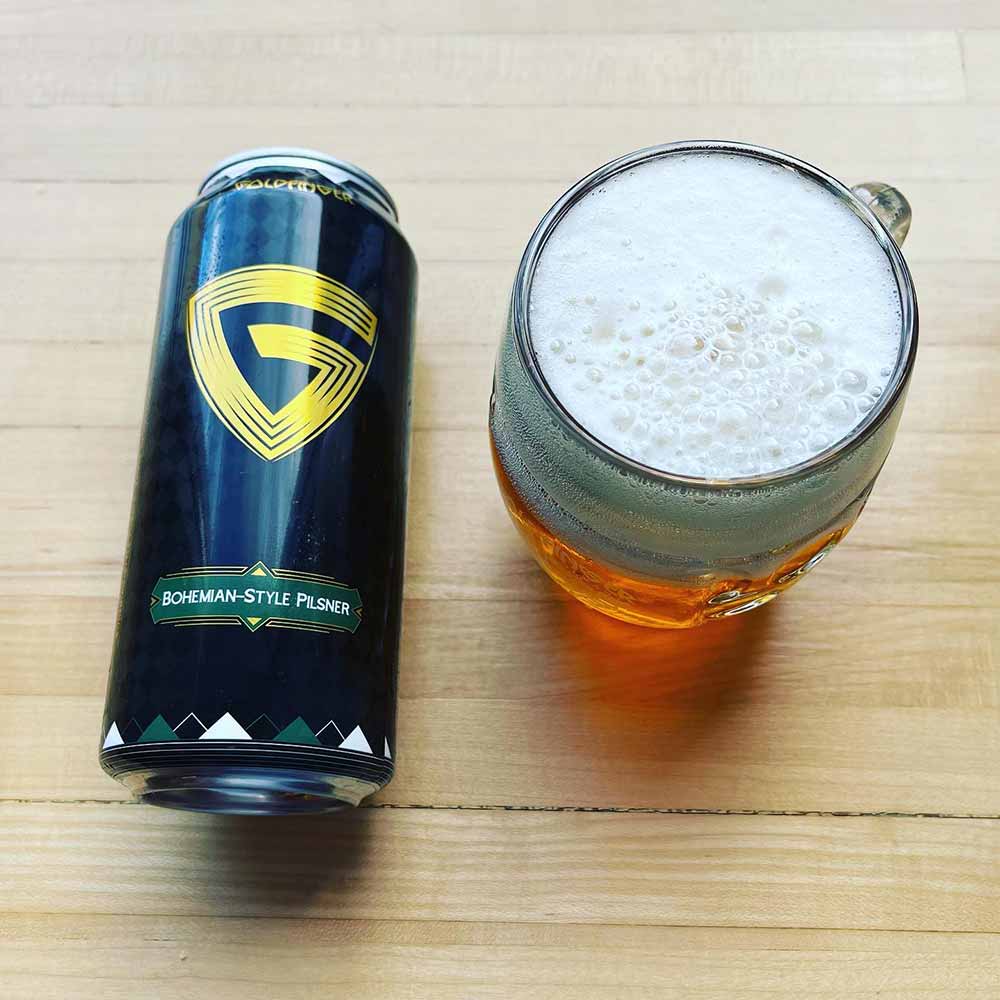
Photography courtesy of Goldfinger Brewing Company
All of Goldfinger’s beers rely on one unseen ingredient.
Beckmann designed his brewery with lagers and, therefore, time in mind.
A steam-jacketed mash mixer allows Beckmann to perform step mashes, progressively increasing the mash temperature through a series of rests. Currently, he decocts in the whirlpool, but Beckmann says a planned expansion will include a dedicated decoction tank.
They also have a separate lauter tun and hot liquor tank, but also a cold liquor tank, “so we can knock out very cold and perform our entire process in the cellar at very cold temperatures,” explains Beckmann, noting that while most craft breweries perform short diacetyl rests at warmer temperatures, at Goldfinger, they are firmly against letting the beer warm up more than one degree beyond the temperature at which they knock out. “Your choices are warm and fast or slow and low, and we’re low and slow all the way.”
Beckmann says this helps reduce the stress on the yeast. “We treat our yeast like they’re our children,” he says with a laugh. “We want them as happy as they can be and let them take their time doing their beautiful work.”
For that reason, primary fermentation happens for eight to ten days in cylindrical, conical vessels so they can harvest the yeast.
At Goldfinger, time is an ingredient as critical as the water, malt, hops, and yeast.
The beer spends most of its time lagering in horizontal lagering tanks, “of which we have many and are getting more,” says Beckmann, because they cause the biggest bottleneck.
Beers can spend anywhere from six weeks on the short end to six months in these horizontal tanks, which also have spunding valves to let Beckmann naturally carbonate.
For instance, Goldfinger’s Oktoberfest, which Beckmann brewed in early spring. “It will stay in the tank all summer,” he said. “We won’t tap it until September during our Oktoberfest celebration.
The extra time ties up tanks, making brewing only lager more challenging.
“It means we need to have more patience and turn beers over a lot slower,” explains Beckmann, who calls it “a blessing in disguise.”
Beckmann feels this helps him deliberately replicate and dial in the recipes for all their core beers. “No better way than brewing them over and over and over again,” he says with a grin.
But Beckmann says he’s currently maxing out their 3-vessel 15-bbl system, only able to tap between four to six beers max at one time.
In February, he tapped all the Pils on draft in their taproom. “We don’t want to run out of beers,” Beckmann says. “We are fortunate to have a lot of demand for our beer, but it’s also a double-edged sword.”
To help keep up with demand, Goldfinger plans to expand production, installing a dedicated cereal cooker along with that decoction tank and adding more, larger lagering tanks.
Centuries of History, Four Little Years, One Big Impact
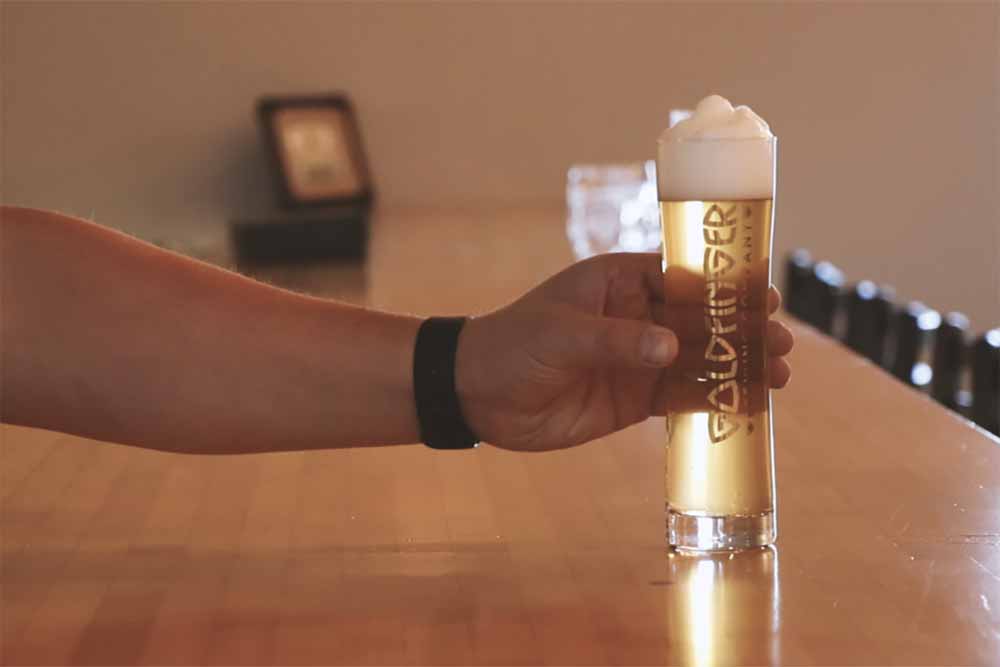
Photography courtesy of Goldfinger Brewing Company
For a brewery built on family history, Goldfinger has already made some history of its own.
First, the brewery opened in the middle of a pandemic…making only lagers…making only three lagers.
“We opened mid-pandemic with only three beers in a market asking for fifteen at once, and we were only making lagers in a market that wanted IPAs,” laughs Beckmann.
Just surviving should earn them a medal.
But Goldfinger hasn’t “just survived.”
In fact, they’ve absolutely crushed it.
In just four short years, they’ve caught the attention of brewers across the country, like those of legendary lager-maker and Human Robot Co-Founder Ken Correll. For the past four years, Correll curated a lager-focused festival called Log Jammin’, where he invites his favorite lager-making friends to descend on Philadelphia for a weekend. “It’s a focused day of drinking lager and camaraderie,” he says. “But also, the ulterior motive is to see what great things people are doing. You’re talking about those like Goldfinger, Cohesion, etc.”
Goldfinger has also been a hit amongst drinkers.
As we mentioned, the brewery has shown up on “Untappd’s All-Time Top-Rated Märzens,” “Untappd’s All-Time Top-Rated Czech Pilsners,” “Untappd’s All-Time Top-Rated Doppelbocks,” and “Untappd’s All-Time Top-Rated Schwarzbiers,” to name a few.
When the world’s largest social networking app for beer drinkers produced its first-ever Untappd Community Awards earlier in the year, Goldfinger picked up an eye-popping twenty-two medals, including fifteen golds—one for Pils—and seven silvers—including Original Lager.
For Goldfinger’s part, Beckmann feels honored with the recognition from industry and fans alike. But everything comes back to his family.
In Poland, Beckmann says one of his cousins has continued to dig into the family’s history, tracking down the remains of the original pub, factory, and brewery to a building in Poland currently being converted into a retail development with condos and shops.
If you visit Goldfinger’s Downers Grove taproom, you’ll see a wall near the entrance covered in artifacts—old newspaper ads for equipment the Goldfingers produced and business registry data—sent over from his cousin.
Beckmann’s sister, a partner in Goldfinger, is also a historian, so they’re trying to gather funds for a discovery trip to Poland to “really solidify our origins and our brewery’s origins,” says Beckmann. “We have the general gist, but I’m very motivated to find out if we get patents or formulas.”
If time is the most essential ingredient at Goldfinger, only time will tell how Beckmann adds to his family’s history books.
With Goldfinger, Beckmann set out to revive his family’s brewing history. It may have only been four years, but little by little, detail by detail, and beer by beer, Goldfinger seems to be already carving out its own legacy.

